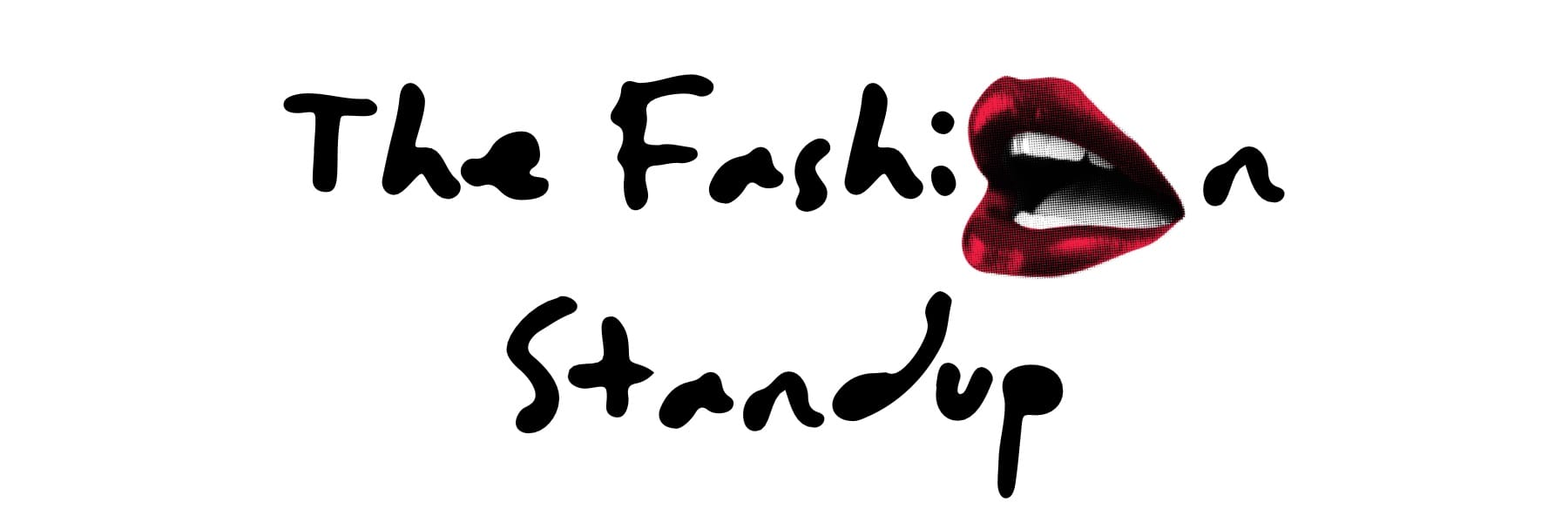Bentley, Couture, Macbook and Dior’s front row- small essay on fashion critics

Two quick notes before we get to what really matters and to make sense of this title and subtitle. Firstly, I already realise that the content calendar is just a digital antidote to anxiety, yes, this topic also came up, without being scheduled. Secondly, part of this text was written by hand, since this newsletter thing has something of a letter, let's use paper and pen (at least until I lost it...)
To explain the title, I have to explain my process. I start with a theme, which either comes to me or is stored in the “brain dump” section of my beloved software Plot — workspace for creatives (no pub here); then there is research, the depth of which depends on the limited time I have available (warning: team of one person); and writing.
During this research I found a lot of written material on fashion criticism by Francesca Granata. An example of this is a book she edited, a compilation of interviews with prominent figures on the subject, interviews that were originally published in the academic journal she founded and of which the book is the same name — “Fashion Projects — 15 years of Fashion in Dialogue.”
In the interview with Robin Givhan, the interviewee states that it is not understandable why fashion is considered frivolous. The argument of the defenders of this theory is that it is not acceptable in today's society for a Couture dress to cost thousands of dollars , and the woman who buys it to be labeled as superficial. On the other hand, a luxury car like a Bentley costs hundreds of thousands of euros and if a man buys it, he is valued for the feat. Givhan (and I too) would prefer a Haute Couture dress.
The new wave of fashion criticism was something that took up a large part of this micro-study, from System Magazine to BOF, including equally renowned publications, less well-known publications, Substacks and academic texts.

In issue 19 of System Magazine we find a series of interviews with the new generation of fashion critics. In which both Severia Mendella and Dana Tarabey, when asked where they would feel at a Dior show, said they would watch it in the front row in front of their computer. Such statements demonstrate the preponderance of digital technology in both society and fashion. Although I recognize and enjoy the democratic access to fashion shows, the digital aspect will never make my blood pump like it does when I watch a show in person.
Discoveries and perspectives
The article written by Loïc Prigent is enriched by two definitions of fashion criticism, which are extremely clear and concise. And which I believe are aligned with the values that have been adopted in recent years to and for our industry.
I choose to share these views through quotations not because it is easier than paraphrasing them, but because I want to retain their original value. The fashion director introduces his text as follows:
"Without criticism, fashion would resemble an interminable football – or even worse, cricket! – match that no one understood. Luckily, critics – like sports commentators – do exist to help identify the players, the stakes, the champions, and the achievements."
Tarabey's perspective on the work she does is practically the vocalization of my wishful thinking:
"Fashion critic, but also a popularizer of fashion studies who mixes fashion, social science, jokes, and poetic flourishes. The whole point is to escape the consensus through culture and to have a laugh. In an industry that says it wants to be more and more democratic, I’m trying to develop a capacity for analysis and promote critical thinking with solid foundations by making them accessible. The whole thing is really interactive. I’m always discussing with fashion students, professionals and fashion lovers who have all just had enough of the ‘like/don’t like’, and who are looking at fashion as it really is: a brilliant cultural object that needs deciphering."
The emergence of a generation of fashion critics driven by digital technology has both positive and negative factors. On the positive side, we have the respect and enormous admiration for the great names in fashion criticism, such as Anna Piaggi and Suzy Menkes, among many others. Another point in favor of these new approaches is positive disruption, that is, negative reviews are no longer the norm in general, and critics are no longer to be feared.
And with great respect, I disagree with the characterization that, in my opinion, Cathy Horyn makes of someone who has as their primary means, in the work they develop in fashion media, the digital independently, as a fashion outsider. I currently develop a fashion newsletter, but thanks to the magnificent Portuguese fashion cluster I can say (with great pride and I hope I don't sound too conceited) that I am a fashion insider.

Long before I could even imagine writing about fashion, I had the great privilege of meeting Suzy Menkes during the Luz edition of ModaLisboa - Lisbon Fashion Week. One of the most magnificent moments I have ever experienced, meeting a professional I admire so much and realizing that she is also an extraordinary person is an undeniably positive feeling.
Before we return to the polarization of the “new” fashion criticism, we will briefly discuss a critical practice of fashion, as if to highlight its existence in this context. This concept was studied and explored by Adam Geczy and Vicki Karamminas, whose project they inspired, the “Critical Fashion Project”, is defined as follows:
"Critical Fashion Practice (CFP) is any piece, item, or work of fashion that announces a level of conceptual functionality that exceeds the capacity of simple clothing. What cfp shares with much contemporary art is the desire to place criticality at the epicentre of its concerns, that is, to challenge precepts about the world, jolt people from lethargic and lazily held views, destabilize ideologies, and to encourage ways of rethinking self and identity. In this regard, cfp can also be considered a metaphysics of clothing, in so far as its engagements exist outside of physical utility."
Since there is no beauty without a flaw, not all new fashion critics are careful with their homework, as Pedro Vasconcelos points out in his article “Luxo do passado, lucrativo do Futuro” (Luxury of the Past, Profit of the Future) in this month’s Vogue Portugal. He gives the example of having heard on a podcast that Schiaparelli was founded in 2018. I share Vasconcelos’ opinion, and I also don’t expect everyone to be as fashion nerdy as I am. I know that it doesn’t make this sin any less, but I suspect that those responsible confused Schiaparelli with Vivetta.

I bring this up because, even though my background is in Fashion Design, good research is something that should be transversal, even if the results of that research can be sewn, written, draped or vocalized in a podcast. I honestly believe that if this research is not extensive, that fact should be made clear.
Streaming as a tool for inspiration
This is a slightly upside-down text, why? Because it is more than halfway through the text that I tell how this topic came about. It came about through a Disney+ series and no, I am not talking about “In Vogue”. I haven’t seen it yet, I really want to, but streaming is losing its original purpose — binge-watching, waiting a week for a new episode, for me is part of the television experience and not the streaming experience.
The series in question is the series “Nada” — a dandy in his senior years who can’t do anything on his own, in other words, a male victim of the patriarchy. However, that’s not what inspired what I’m writing now — the protagonist Manuel is a food critic, but what’s truly extraordinary is that this series gives us a completely different idea of what we empirically think a critic is.

Manuel Tamayo Prats had the following process: he ate at different types of restaurants in his city, Buenos Aires, and wrote about his experience. But there is a third element in this sequence that surprised me in an extraordinary way, contrasting with the preconceived idea I had of the skills of a critic, regardless of his area of activity.
Tamayo Prats cooked, he didn't just criticize or reflect on things, he knew how to do and execute what he criticized. Something that was extremely revealing for me, I have always associated the activity of criticism with purely theoretical knowledge, so this example aroused my curiosity to know more about the critical activity in my area, such interest also has an emotional root due to my training and the project I am currently dedicated to.
I don't like conclusions when writing something academic or in some way more "dense", the only thing worse than writing conclusions is the captions... But the reason I choose not to conclude some articles comes from the belief that an open narrative provides dialogue, even if not in a tangible form — if something you read awakens thought and questions, it is already a dialogue, without needing "likes" or "comments".
In the next article, we will talk about the homework I delegate to myself — that is, what I discovered and learned while studying Vestoj. In addition, I will also include thoughts and reflections on what has happened so far in this fashion month, which transcends the Gregorian calendar.
P.S. Thank you very much for reading and subscribing to The Fashion Standup, and for your patience with the delay of this edition, the next article will be out between September 30th and October 4th. Until then, the dialogue continues on social media — @thefashionstandup.
